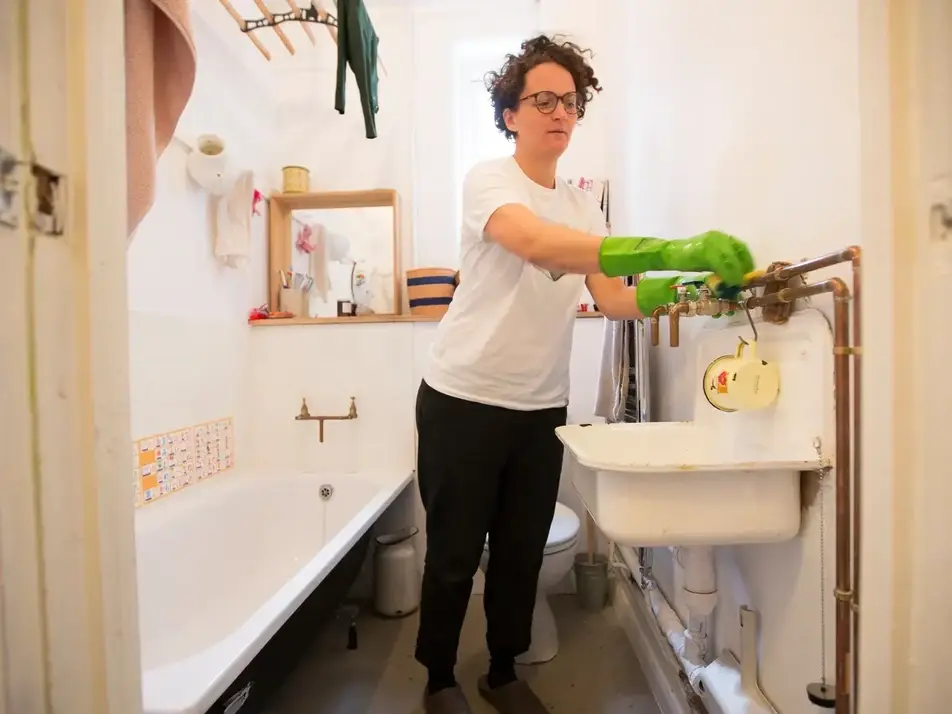How to Make Non-Toxic Cleaning Products at Home

Making non-toxic cleaning products at home is a great way to save money, protect your health, and be kinder to the planet.
Why this recipe matters
According to the U.S. Environmental Protection Agency (EPA), many surfactants used in conventional cleaning products tend to break down into not-so-great chemicals (known as VOCs). Sadly, treatment facilities often struggle to take these VOCs out of wastewater completely, putting aquatic life in danger once they find their way into our waterways—for example, phosphates in dishwashing liquid encourage algae growth, which depletes marine ecosystems of oxygen.
Ingredients
- Baking soda
- Castille soap
- White vinegar
- Essential oils
- Anything on this list from Earth Easy!
- Amber glass bottles (to protect ingredients from UV light)
Recipe
1. Take stock of what you already have.
- Check out this article from Better Homes and Gardens to see how many ways you can use baking soda as a stand-alone cleaning product. This versatile ingredient that’s typically used to make cookies and muffins can be used to clean ovens, neutralize foul odors, and even kill many types of mold.
2. Consider the cost difference between generic brands and brand-name ingredients.
- If you want to make any of the cleaning products described in the Earth Easy article linked above—like an all-purpose cleaner or carpet stain remover—and don’t have certain ingredients, do some research to make sure you’re choosing the most affordable option. Buying ingredients in bulk can also help reduce costs.
3. Don’t throw out all of your current products.
- While it might be tempting to bin some of the products you’ve been using as you learn more about some of the drawbacks of conventional products, it’s always better to use up what you have to minimize waste (and not throw away your money!).
- If you’ve been dealing with something like dermatitis or asthma, however, it might be helpful to switch out some products you’ve been using for a while to see if you notice a difference.
4. Make sure to store your products properly
- A way to reduce plastic waste and ensure the longevity of your products is to invest in amber glass bottles from a preferred retailer, especially if you choose to add essential oils for some natural fragrance (these often break down in light).
5. Do what works for you!
- Trying to make everything non-toxic can be an overwhelming endeavor. Maybe switch out one or two products with the alternatives mentioned in this recipe to start with if that feels easy for you. It’s not all or nothing!
Nutritional Information
How this recipe has nurtured a community
“Natural cleaning products tend to be eco-friendly. Their packaging is often made sustainably from recycled materials and isn’t tested on animals. Additionally, they don’t contain the harsh chemicals that can get into the water system. Green cleaners are better for environmental health and the health of your family.”
― Pacesster Homes
Finishing Touch
To make this DIY endeavor more social, consider hosting a green cleaning party to make non-toxic products with your friends.

